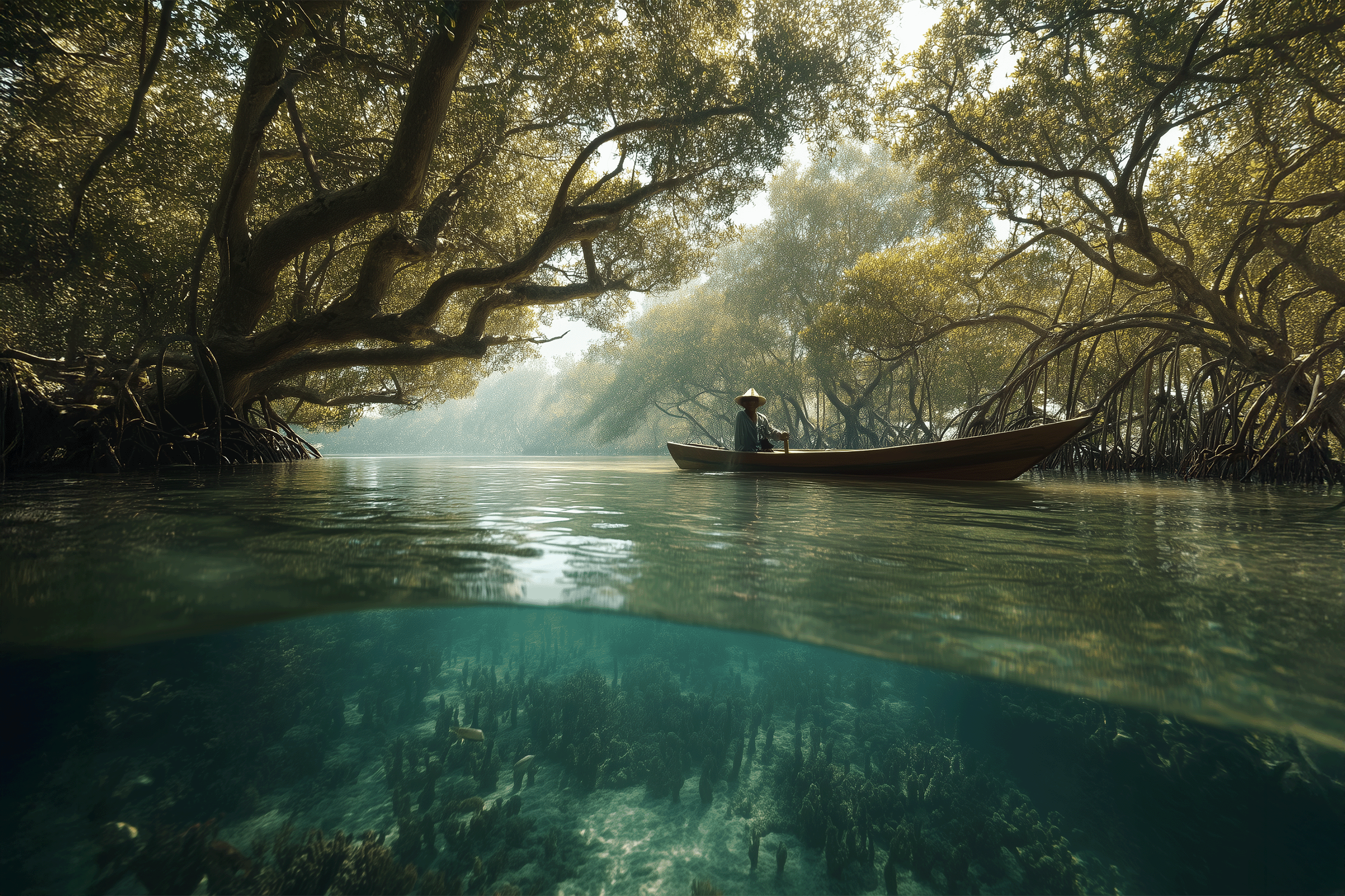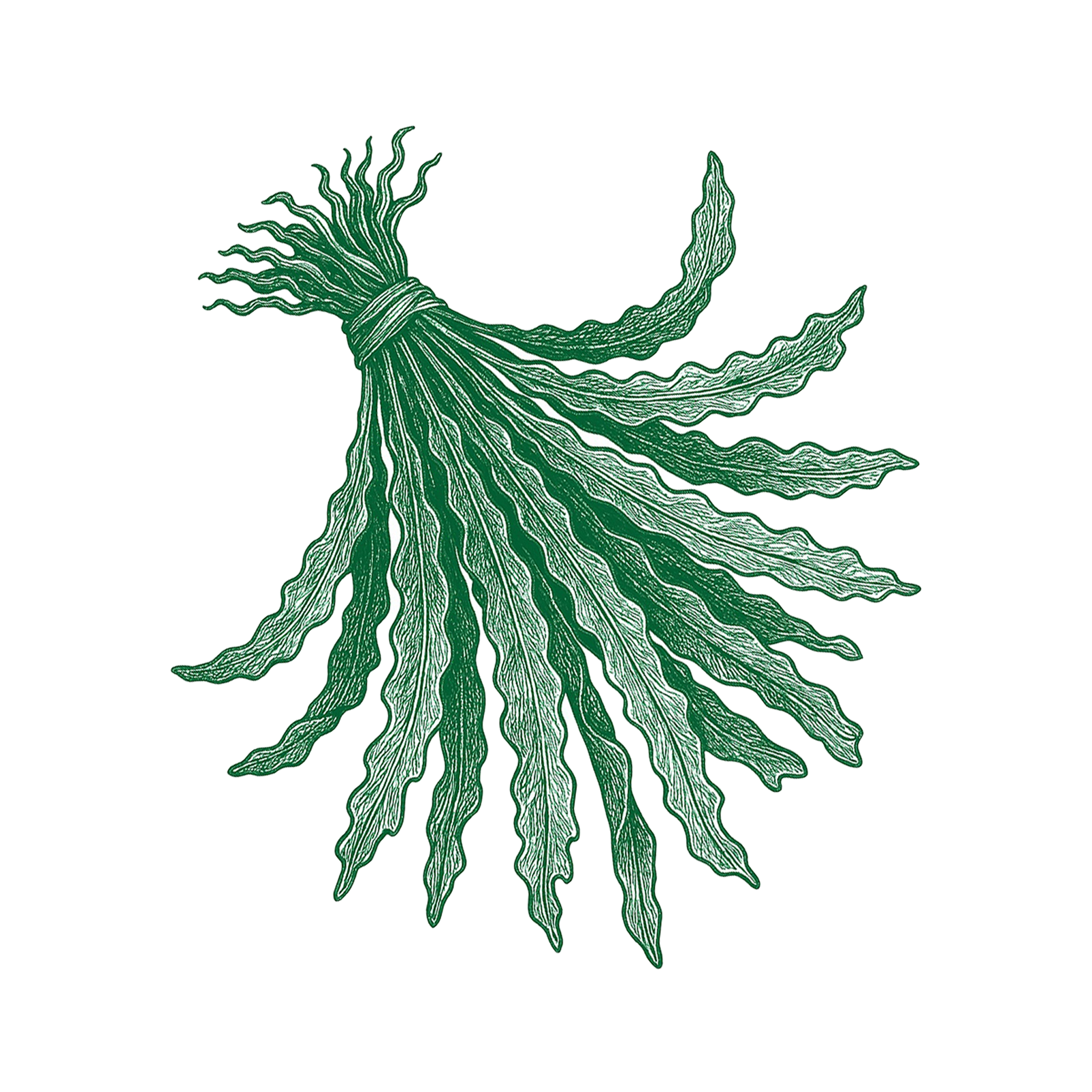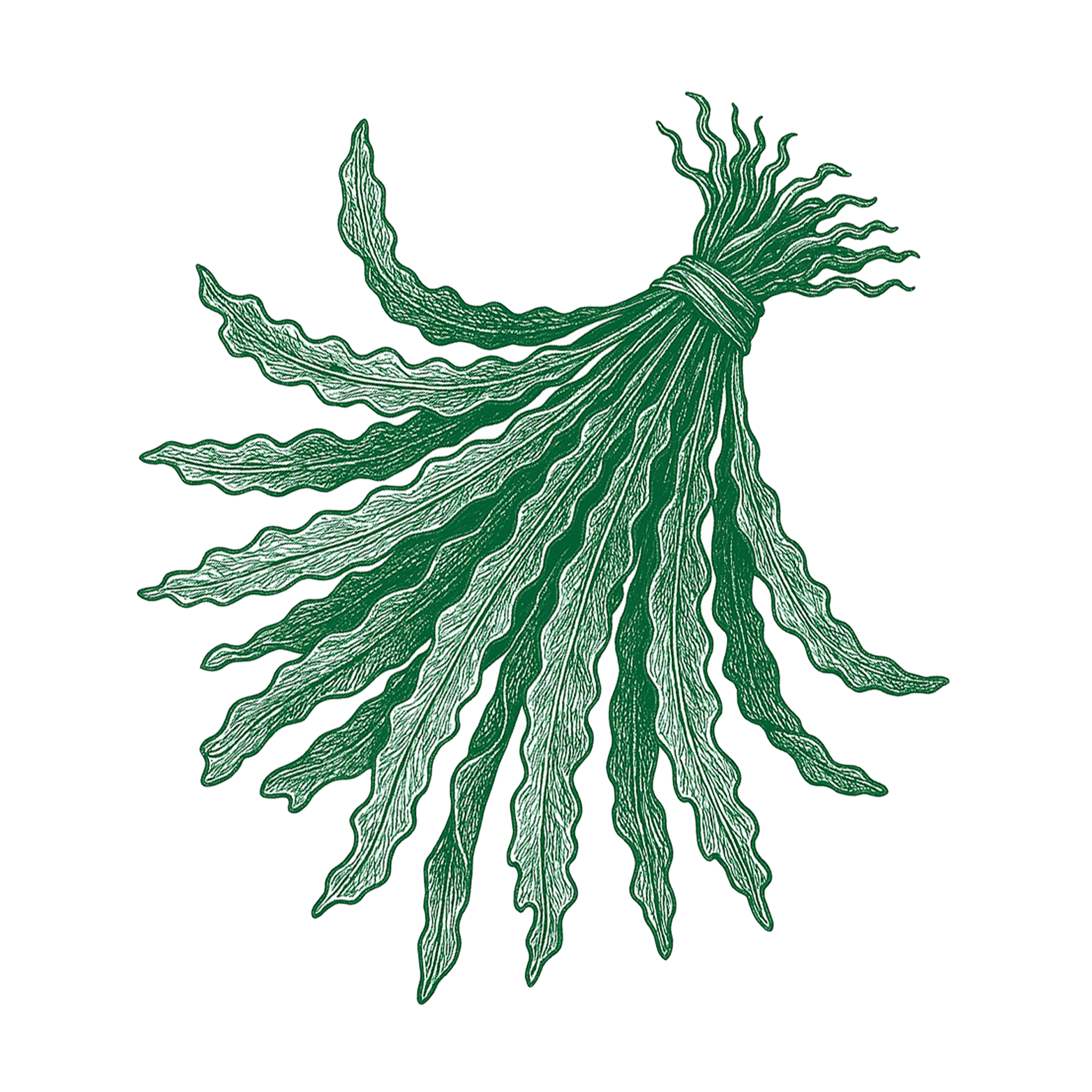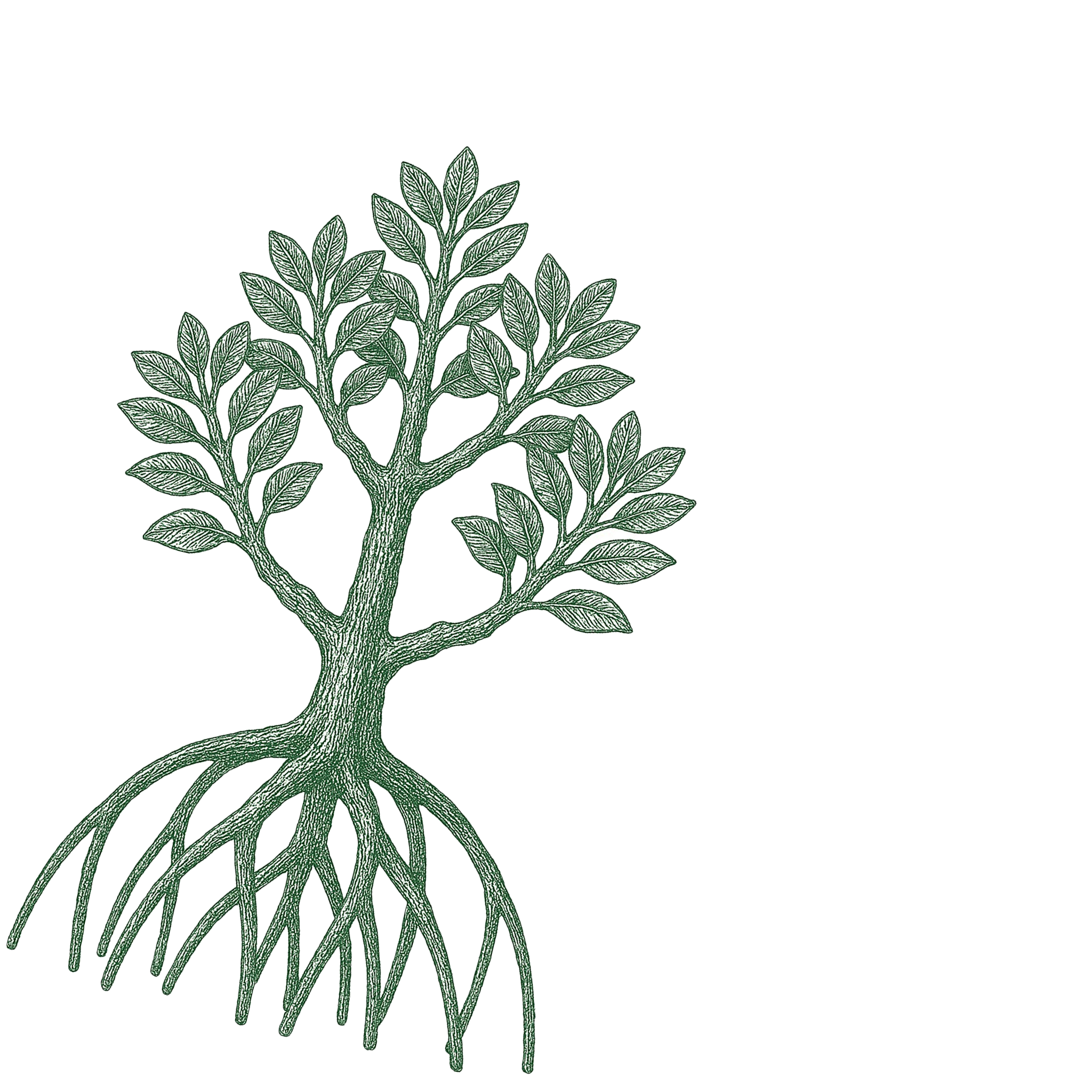The Vital Role of Mangroves in Coastal Ecosystems

Mangroves protect shorelines, support biodiversity, and play a critical role in coastal resilience. Here’s why preserving and restoring them matters.

Mangroves protect shorelines, support biodiversity, and play a critical role in coastal resilience. Here’s why preserving and restoring them matters.




Mangroves stabilize shorelines, support marine biodiversity, and capture carbon at high rates. PhycoNor supports the protection and restoration of mangrove ecosystems as part of a broader commitment to coastal resilience and sustainable aquaculture.






Mangroves are not just trees growing at the edge of the sea—they are living buffers between land and ocean. Their dense root systems reduce wave energy, prevent erosion, and protect communities from storm surges and rising tides.
They also act as essential habitats, supporting a wide range of marine species, from juvenile fish and crabs to mollusks and migratory birds.
The underwater root networks of mangroves serve as nurseries for countless marine organisms. Young fish and crustaceans shelter within the roots, gaining protection from predators during critical stages of development. This makes mangroves vital to both local fisheries and wider marine food chains.
By supporting healthy fish stocks and marine diversity, mangroves provide a natural foundation for sustainable aquaculture and coastal livelihoods.
Mangroves store carbon up to four times more efficiently than terrestrial forests. They sequester carbon both above and below ground, making them one of the most effective tools for climate mitigation.
Protecting and restoring mangrove forests is one of the most impactful strategies available for reducing atmospheric carbon while enhancing local ecosystems.
Despite their importance, mangroves are under threat. Coastal development, pollution, and unsustainable land use have led to widespread deforestation. Once lost, the ecological and protective benefits of mangroves are difficult and costly to replace.
However, with the right strategies—including community-led replanting, protected zones, and sustainable land management—mangrove ecosystems can recover and thrive again.
As part of our work in sustainable aquaculture, PhycoNor supports the protection and restoration of mangrove habitats. Healthy mangrove ecosystems create the foundation for regenerative marine farming by maintaining water quality, sheltering marine life, and strengthening shoreline stability.
We collaborate with local partners to ensure that our farming activities are aligned with mangrove conservation—because thriving coasts require thriving ecosystems.





